Cactus and succulents make excellent house plants. They adapt naturally to dry, warm temperatures (common indoors) and withstand poor care for days, even weeks at a time. They almost always arouse interest with their sculptural form and the variety of leaf sizes, shapes, and arrangements often combined with striking color patterns.
Grown in attractive pots, dish gardens, and terrariums, they can be displayed in windows or under bright lights, or in hanging baskets. they can be dramatically silhouetted against a light-colored wall or softly illuminated with well-placed spotlights.
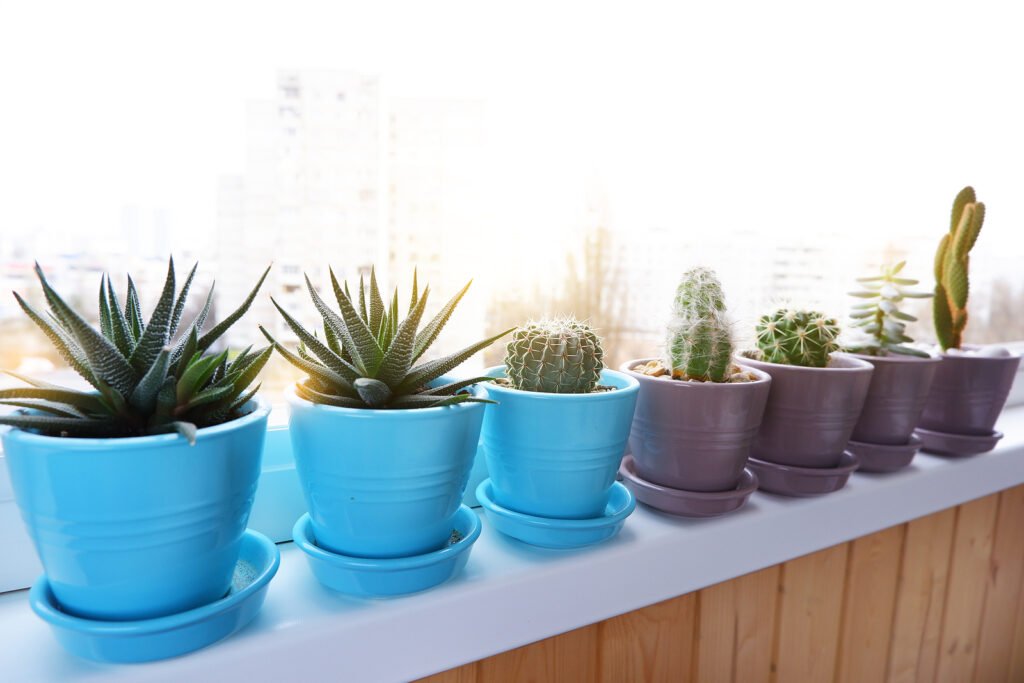
What cactus and succulents need indoors
- Light: Bright light is necessary. Grow cactus and succulents in a window when possible; east and south-facing sills provide the best location to keep them healthy. Avoid placing them right next to window glass in summer; they can burn.
- Temperature: Average home temperatures are best about 65°F (18°C) during the day and 10-15° cooler at night, always warmer than 45°F (7.2°C).
- Moisture and Air Circulation: Water to moisten the soil then let the soil nearly dry out before watering again. Average indoor humidity is sually sufficient. A well-venitlated room is important; plants want clean well-circulated air.
- Rest Period: Once a year–usually in winter–cacti and succulents enter a dormant period. Plants need some light but cooler temperatures (about 50°F ) to rest. During the rest period the soil should be kept barely moist.
18 cactus and succulents to grow indoors
Click on the botanical name in italics to learn how to grow these cacti and succulents:
 African Milk Tree (Euphorbia trigona). A succulent evergreen perennial that looks and behaves like a cactus. Euphorbia is Africa’s equivalent of the cacti of the Western Hemisphere. This plant is leafy as well as thorny. Needs bright light. Grow outdoors in Zones 10-11.
African Milk Tree (Euphorbia trigona). A succulent evergreen perennial that looks and behaves like a cactus. Euphorbia is Africa’s equivalent of the cacti of the Western Hemisphere. This plant is leafy as well as thorny. Needs bright light. Grow outdoors in Zones 10-11.
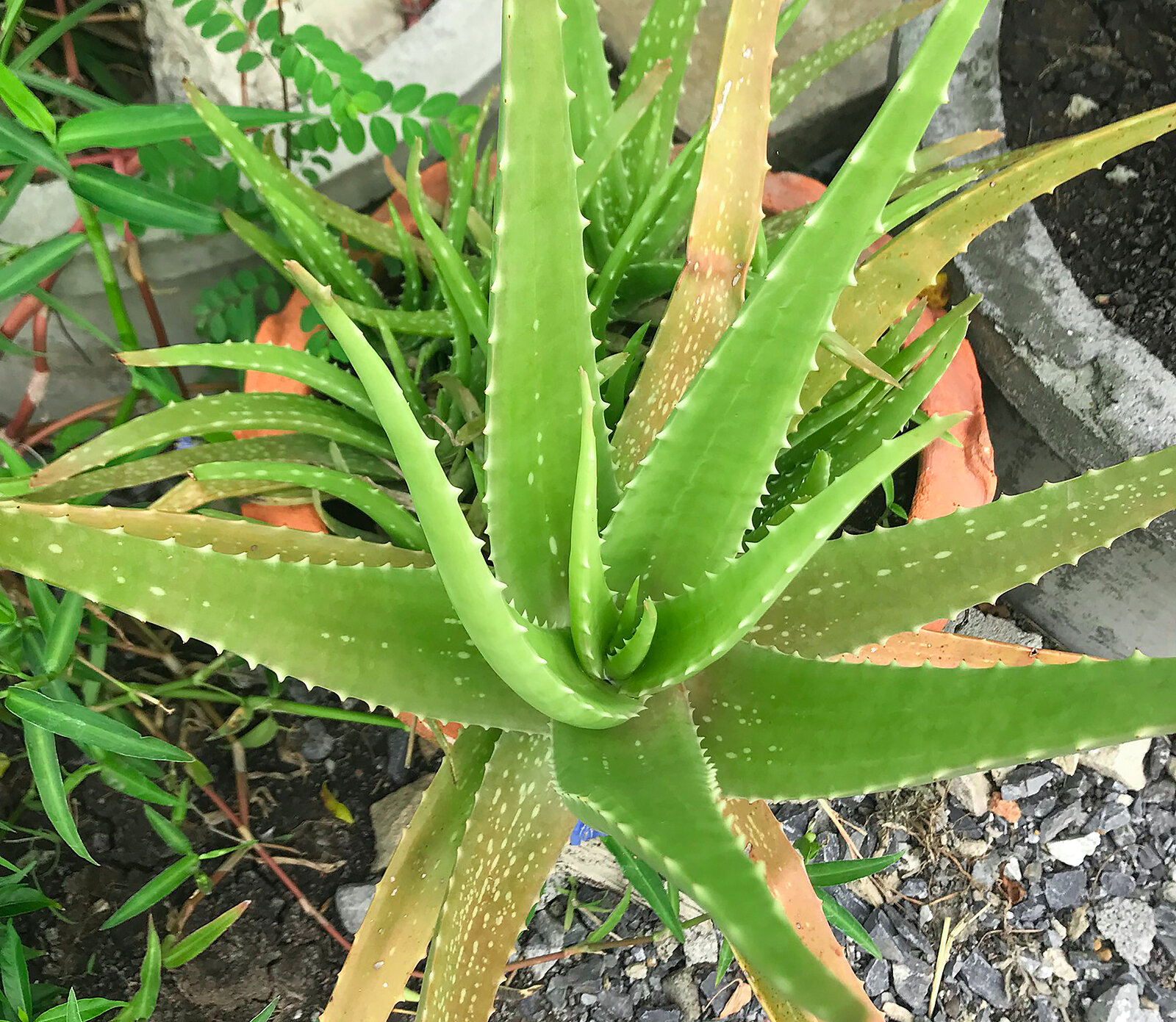 Aloe (Aloe spp.). Subtropical succulent perennial. These are the African versions of the Mexican agaves. Thick, pointed succulent leaves from attractive stemless rosettes. Needs bright light, preferably a south-facing window, and average home temperatures. Grow outdoors in Zones 8-11.
Aloe (Aloe spp.). Subtropical succulent perennial. These are the African versions of the Mexican agaves. Thick, pointed succulent leaves from attractive stemless rosettes. Needs bright light, preferably a south-facing window, and average home temperatures. Grow outdoors in Zones 8-11.
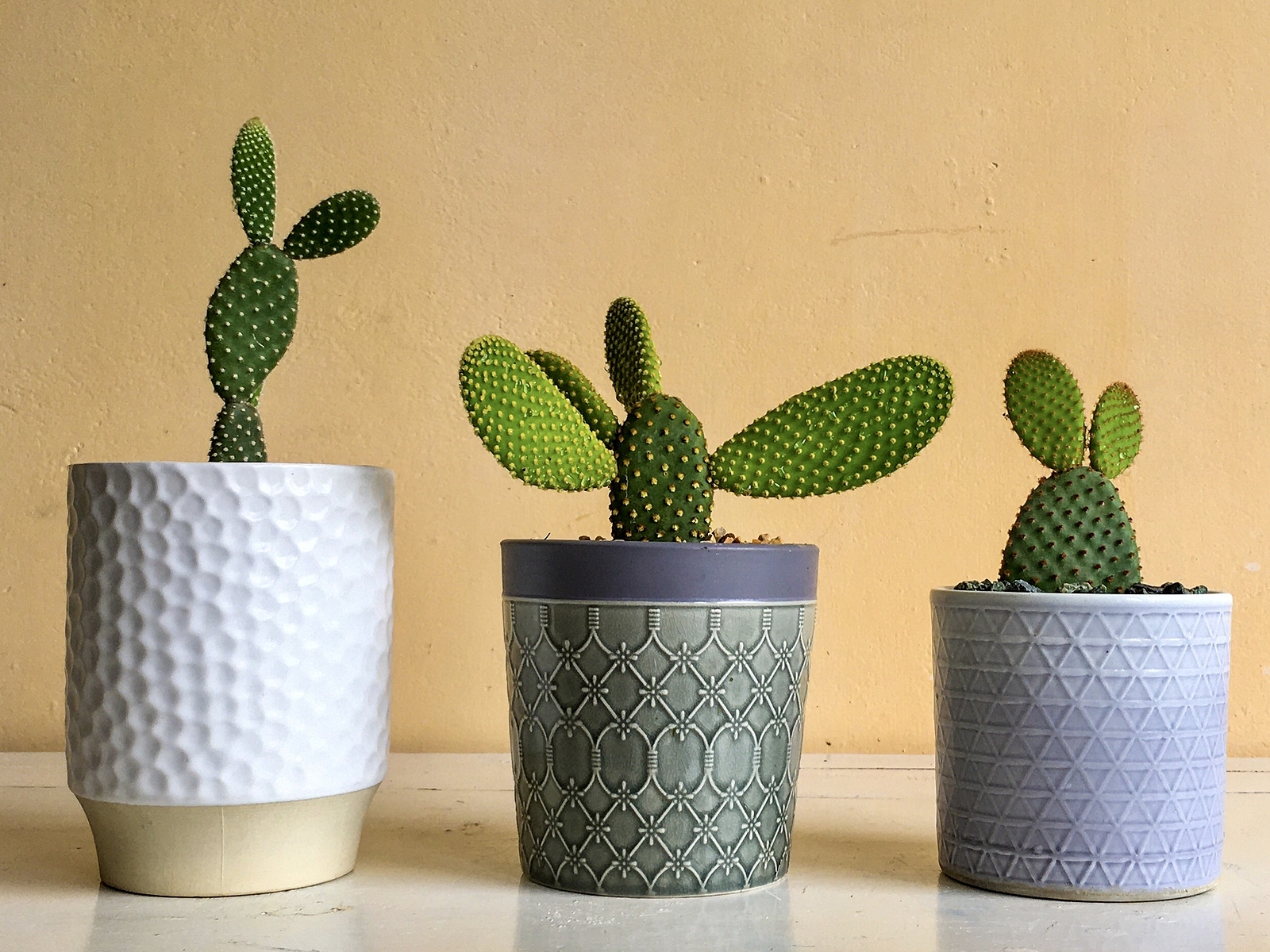 Bunny Ears Cactus (Optunia micrpdasys). Succulent evergreen perennial has white and fluffy spines that may be cute but will really hurt if touched. Easy care cactus with flat oval pads that look like bunny ears. Needs full sun or very bright light. Grow outdoors in Zones 10-11.
Bunny Ears Cactus (Optunia micrpdasys). Succulent evergreen perennial has white and fluffy spines that may be cute but will really hurt if touched. Easy care cactus with flat oval pads that look like bunny ears. Needs full sun or very bright light. Grow outdoors in Zones 10-11.
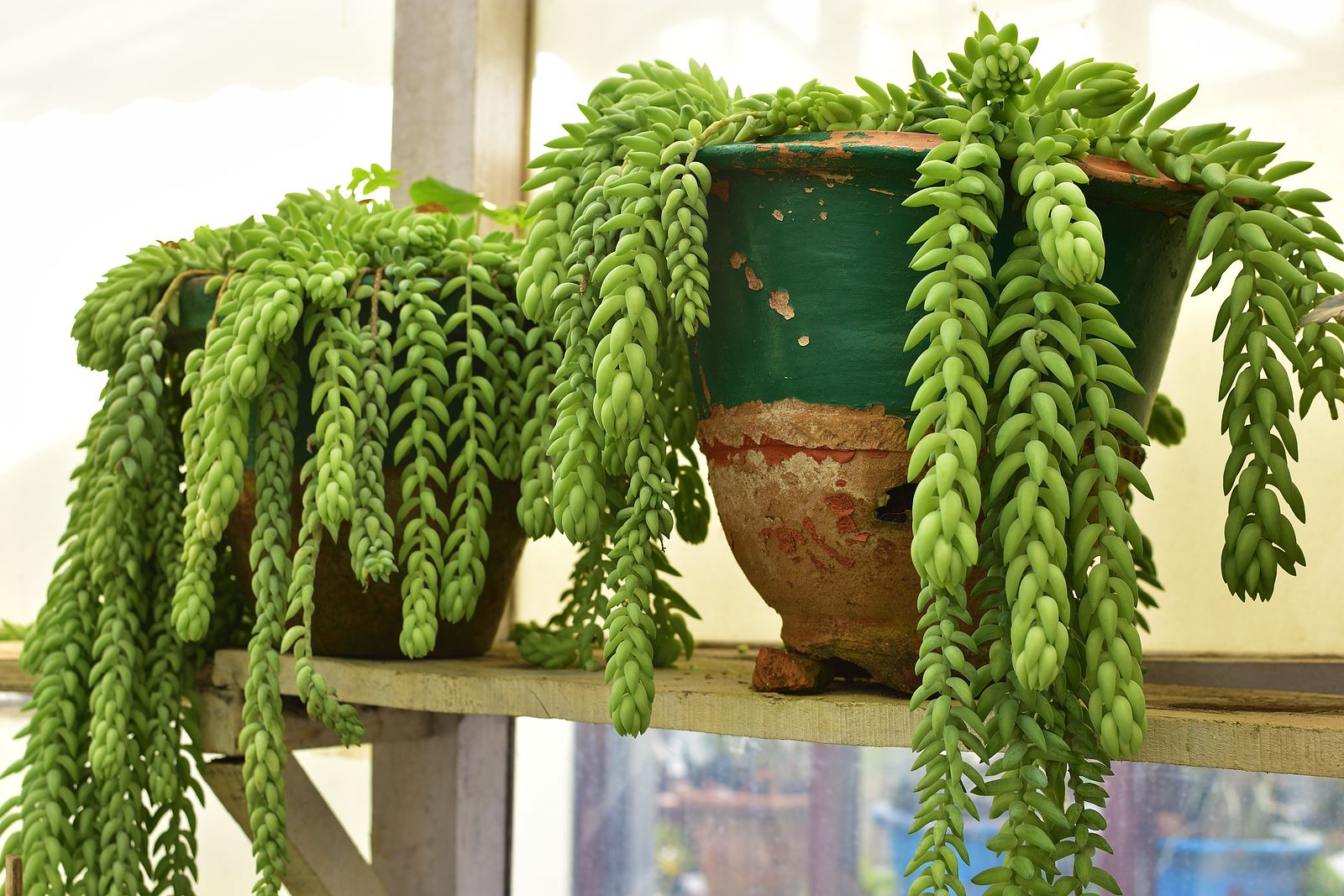 Burro’s Tail (Sedum morganianum). Succulent evergreen perennial. Stem with tiny pointed succulent leaves that trail beautifully from hanging baskets or out of pots positioned on pedestals or shelves. Grow as you would any cactus; avoid over-fertilizing. Grow outdoors in Zones 10-11.
Burro’s Tail (Sedum morganianum). Succulent evergreen perennial. Stem with tiny pointed succulent leaves that trail beautifully from hanging baskets or out of pots positioned on pedestals or shelves. Grow as you would any cactus; avoid over-fertilizing. Grow outdoors in Zones 10-11.
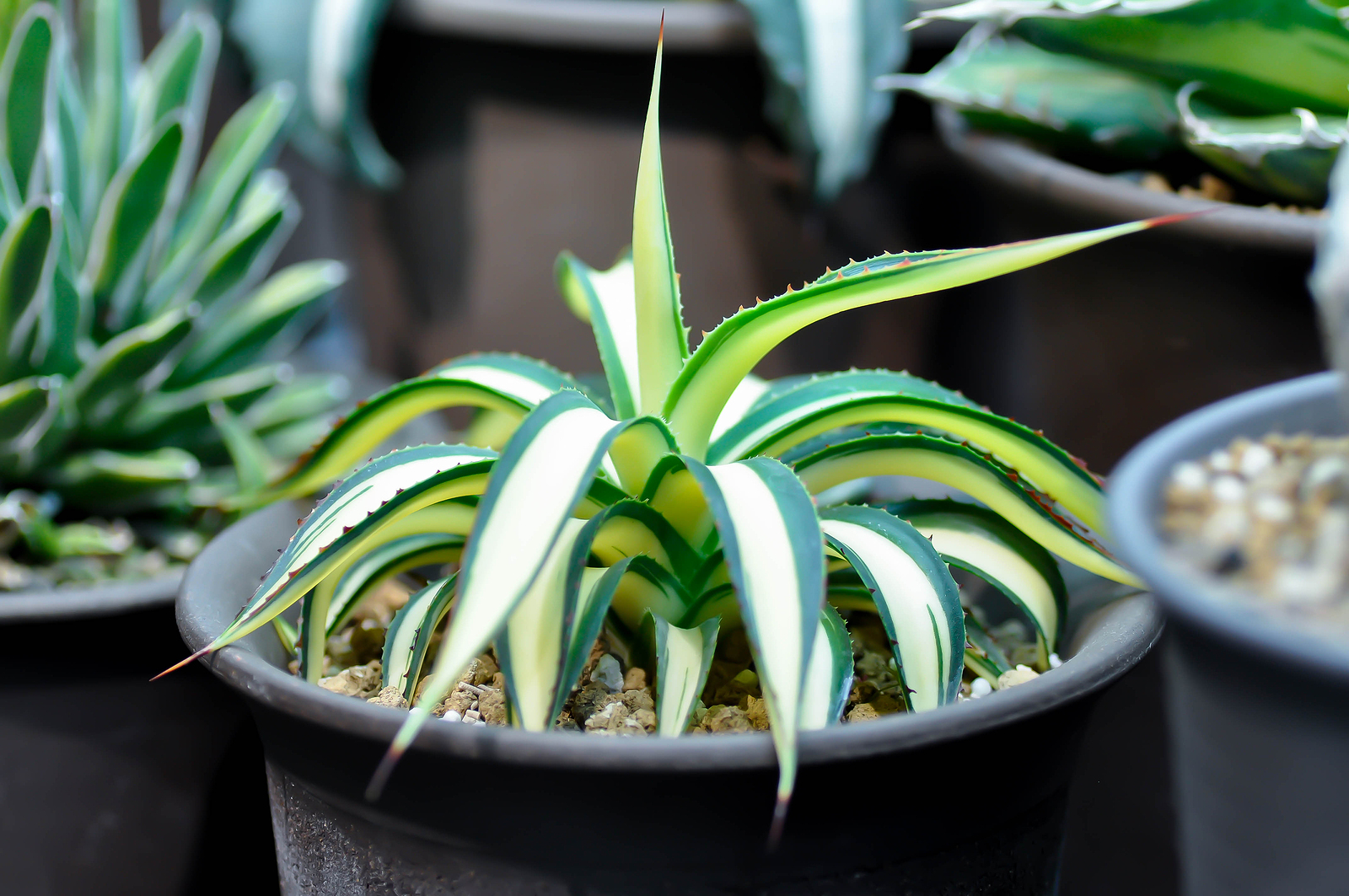 Century Plant (Agave americana). Succulent evergreen perennial. Thick, long, pointed, sharp leaves that fan out from a rosette. Indoors grows to about 12 inches tall. Give this plant lots of sun. There are many species of this Mexican native. Grow outdoors in Zones 8-11.
Century Plant (Agave americana). Succulent evergreen perennial. Thick, long, pointed, sharp leaves that fan out from a rosette. Indoors grows to about 12 inches tall. Give this plant lots of sun. There are many species of this Mexican native. Grow outdoors in Zones 8-11.
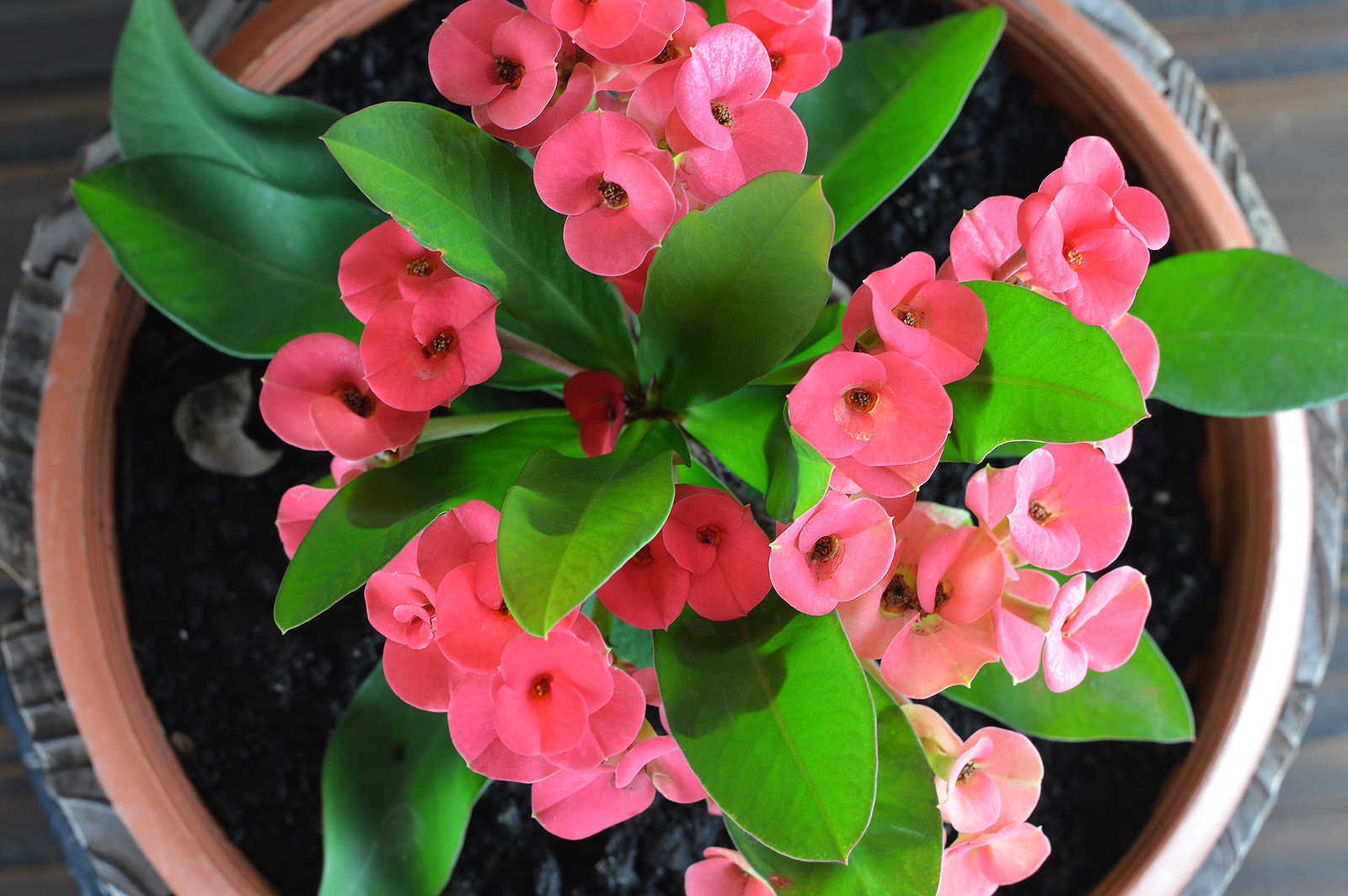 Crown-of-Thorns (Euphorbia milii). Succulent evergreen perennial. An interesting plant with rounded leaves on leggy, thorny stalks. If it gets direct light, this plant will produce tiny flowers nearly year-round that are red, yellow, or salmon. Allow the soil to dry out between waterings. Grow outdoors in Zones 9-11.
Crown-of-Thorns (Euphorbia milii). Succulent evergreen perennial. An interesting plant with rounded leaves on leggy, thorny stalks. If it gets direct light, this plant will produce tiny flowers nearly year-round that are red, yellow, or salmon. Allow the soil to dry out between waterings. Grow outdoors in Zones 9-11.
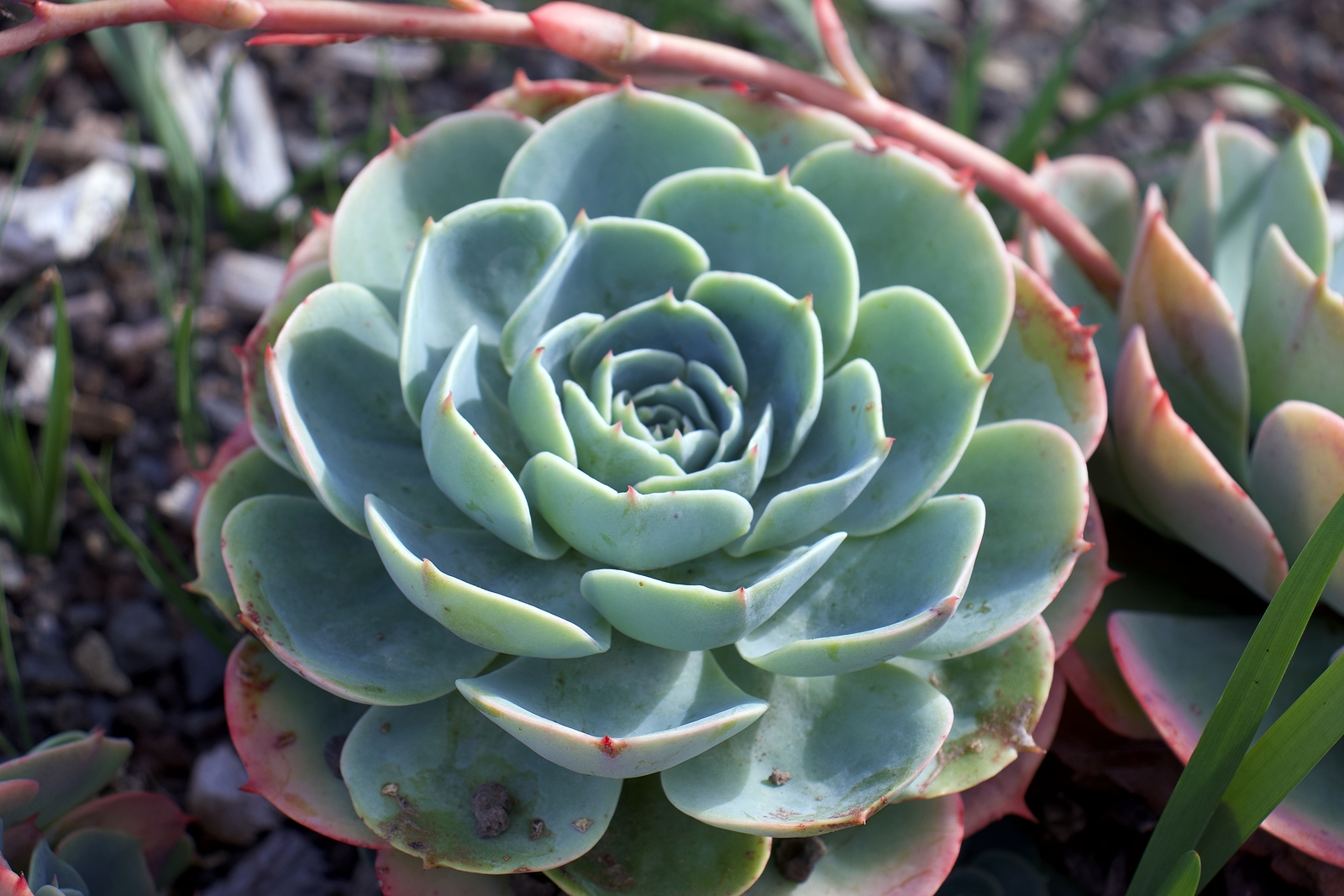 Echeveria (Echeveria spp.). Succulent evergreen perennial. Plants have pointed leaves that form tight rosettes of green, blue-green, whitish, or bronze, sometimes tipped in red. Pink, red, or yellow flowers on tall stems emerge from the center of the plant in summer. Grow outdoors in Zones 8-11.
Echeveria (Echeveria spp.). Succulent evergreen perennial. Plants have pointed leaves that form tight rosettes of green, blue-green, whitish, or bronze, sometimes tipped in red. Pink, red, or yellow flowers on tall stems emerge from the center of the plant in summer. Grow outdoors in Zones 8-11.
 Hen and Chicks (Sempervivum spp.). Succulent evergreen perennial. This succulent plant produces plump rosettes (the “hens”), which rapidly grow young offsets (the “chick”). Tall reddish flower stems can grow to 24 inches tall. Fleshy rosettes are gray tinged with purple. Grow outdoors in Zones 4-10.
Hen and Chicks (Sempervivum spp.). Succulent evergreen perennial. This succulent plant produces plump rosettes (the “hens”), which rapidly grow young offsets (the “chick”). Tall reddish flower stems can grow to 24 inches tall. Fleshy rosettes are gray tinged with purple. Grow outdoors in Zones 4-10.
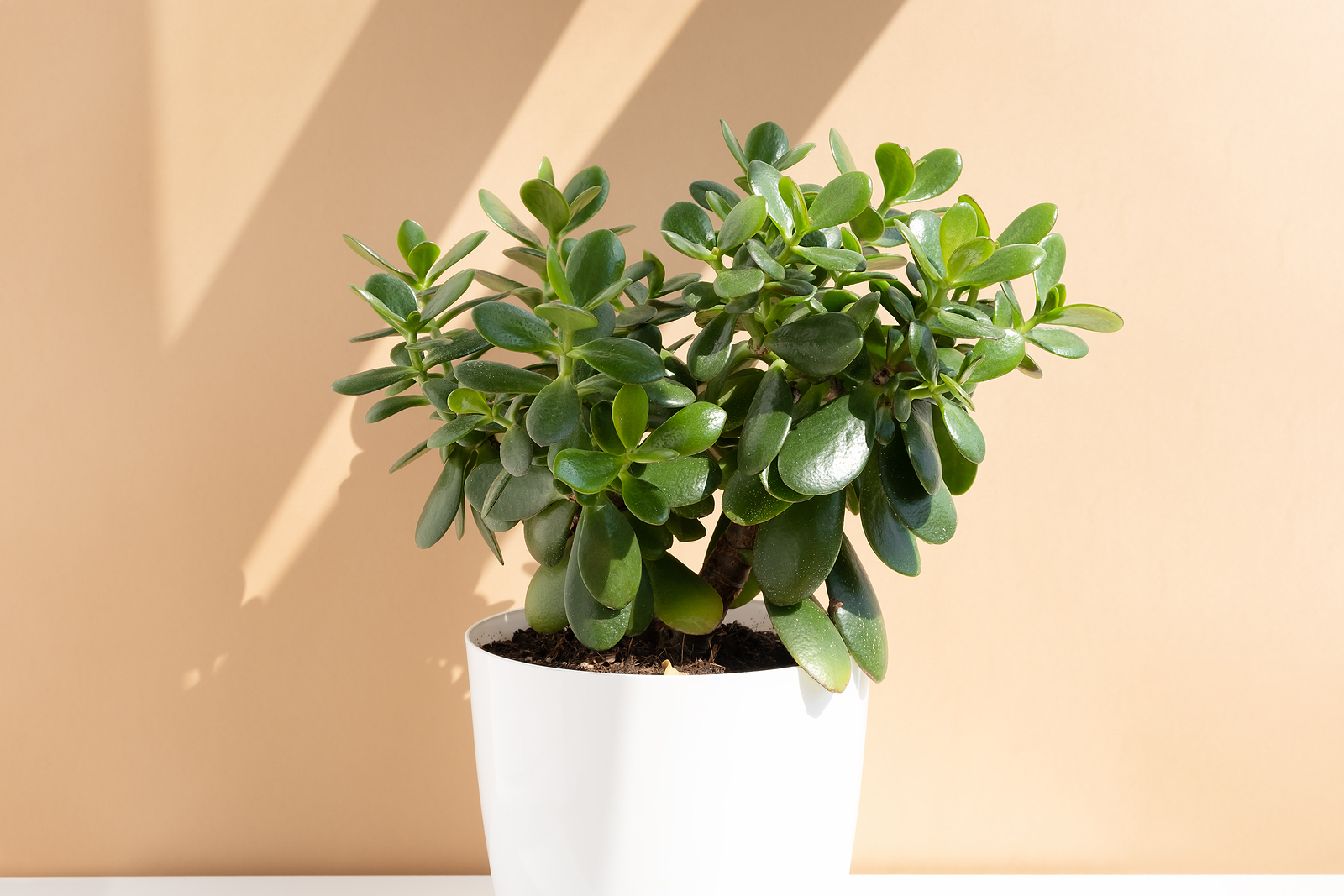 Jade Plant (Crassula ovata). Succulent evergreen perennial. Thick succulent leaves that are jade green, tinged on the edges with red. Very slow-growing. Bright, direct light is best but plants will tolerate medium light. Wants average household temperatures. Grow outdoors in Zones 8-11.
Jade Plant (Crassula ovata). Succulent evergreen perennial. Thick succulent leaves that are jade green, tinged on the edges with red. Very slow-growing. Bright, direct light is best but plants will tolerate medium light. Wants average household temperatures. Grow outdoors in Zones 8-11.
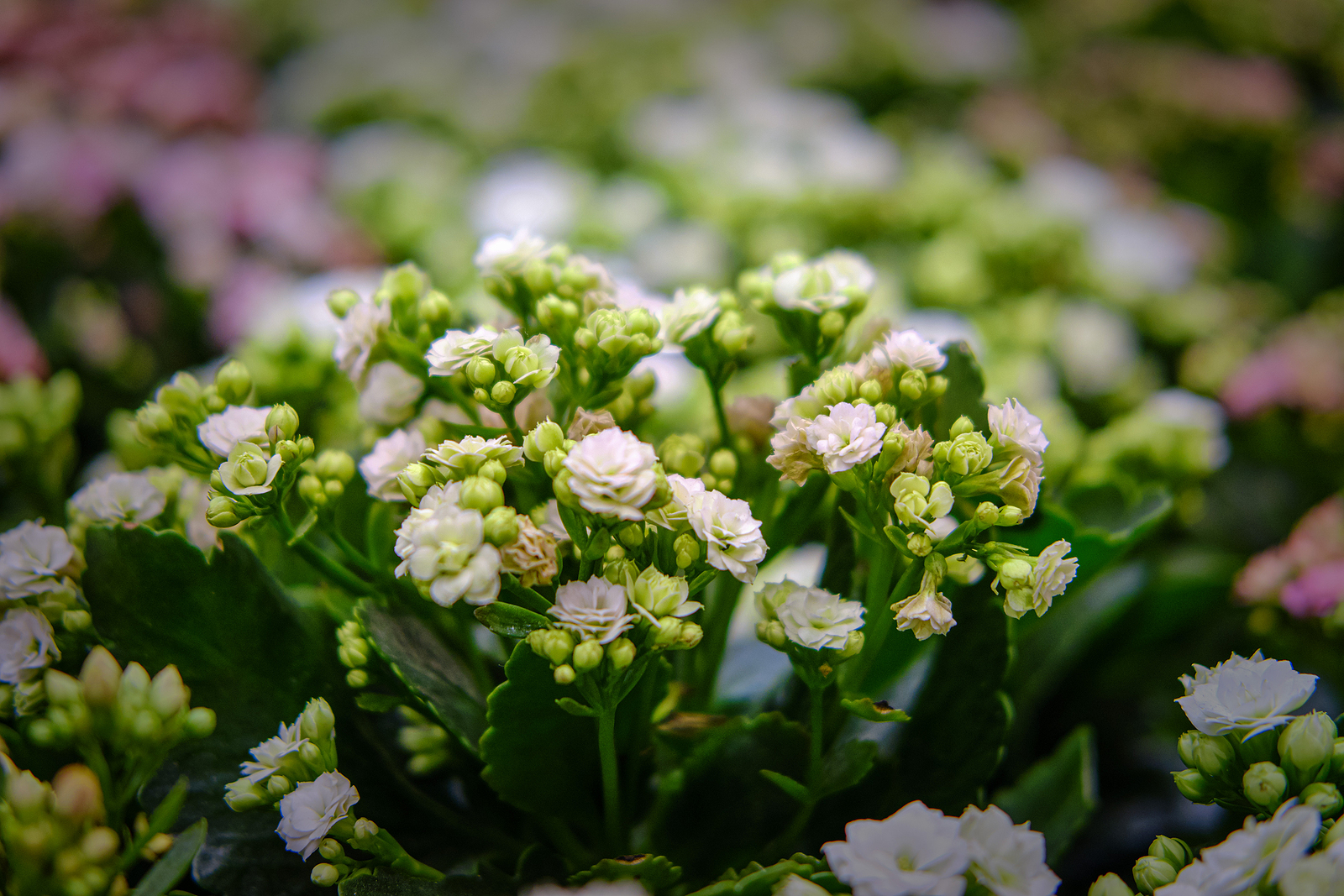 Kalanchoe (Kalanchoe blossfeldiana). Succulent evergreen perennial. One of the most popular flowering houseplants, this succulent produces pretty flowers in large heads in red, pink, lilac, orange, yellow, or white on a neat mound of waxy, rounded leaves. Blooms heaviest in direct sun. Grow outdoors in Zones 9-11.
Kalanchoe (Kalanchoe blossfeldiana). Succulent evergreen perennial. One of the most popular flowering houseplants, this succulent produces pretty flowers in large heads in red, pink, lilac, orange, yellow, or white on a neat mound of waxy, rounded leaves. Blooms heaviest in direct sun. Grow outdoors in Zones 9-11.
 Living Stones (Lithops spp.) Succulent evergreen perennial. Tiny rounded columns with mosaic markings of browns, pinks, and golds are easily mistaken for stones. In late summer, a daisylike bloom may appear on two leaves. Grow like any other cactus or succulent. Grow outdoors in Zones 10-11.
Living Stones (Lithops spp.) Succulent evergreen perennial. Tiny rounded columns with mosaic markings of browns, pinks, and golds are easily mistaken for stones. In late summer, a daisylike bloom may appear on two leaves. Grow like any other cactus or succulent. Grow outdoors in Zones 10-11.
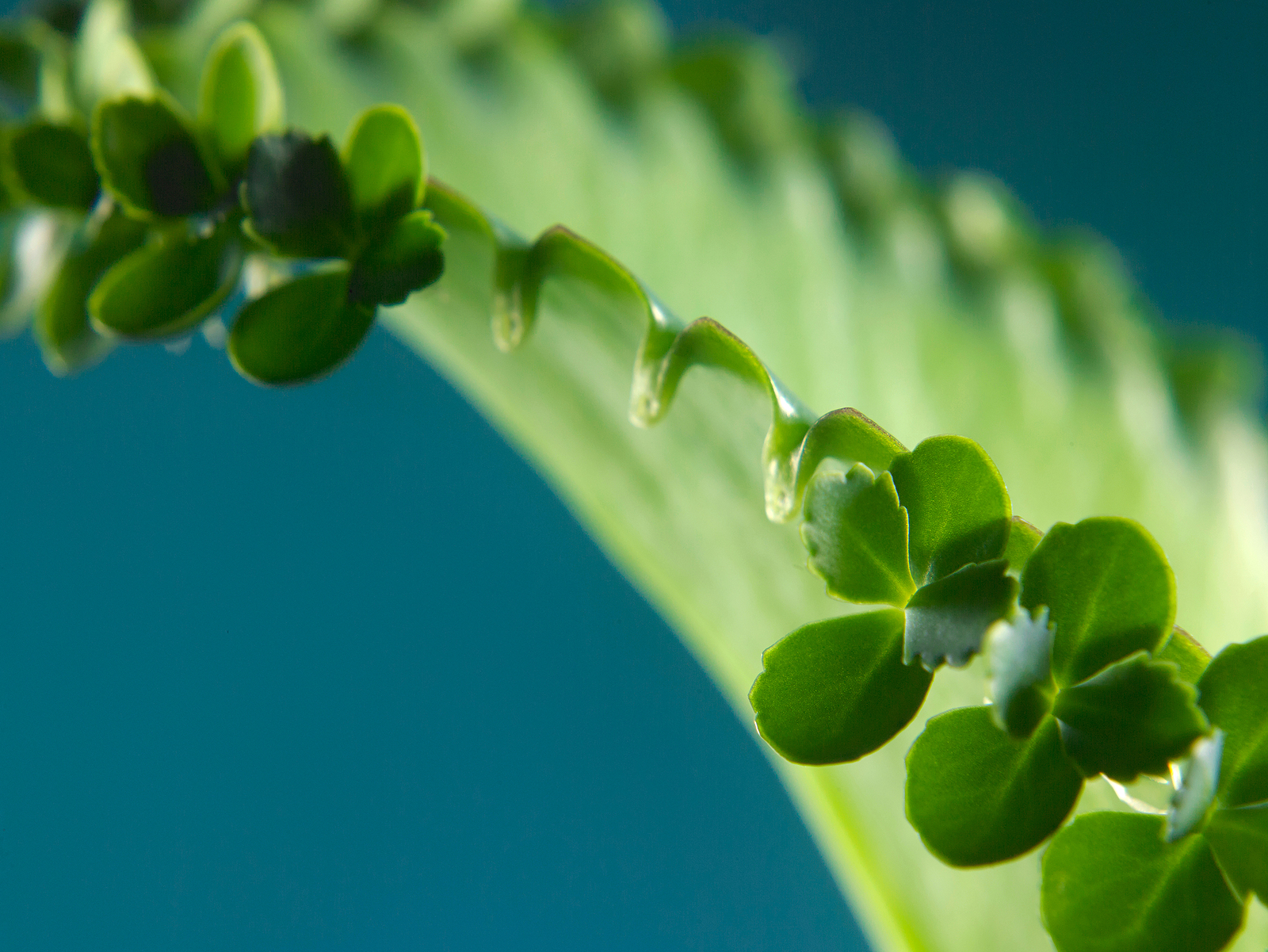 Mother-of-Thousands (Kalanchoe daigremontiana). Succulent evergreen perennial. Grows on a slender stem with 1 to 2-inch blue-green leaves splotches in reddish-purple. The edges of the leaves have shallow teeth, and between each pair of teeth is a tiny replica of the whole plant; these drop off, root, and grow to form a clump around the mother plant. Grow outdoor in Zones 10-11.
Mother-of-Thousands (Kalanchoe daigremontiana). Succulent evergreen perennial. Grows on a slender stem with 1 to 2-inch blue-green leaves splotches in reddish-purple. The edges of the leaves have shallow teeth, and between each pair of teeth is a tiny replica of the whole plant; these drop off, root, and grow to form a clump around the mother plant. Grow outdoor in Zones 10-11.
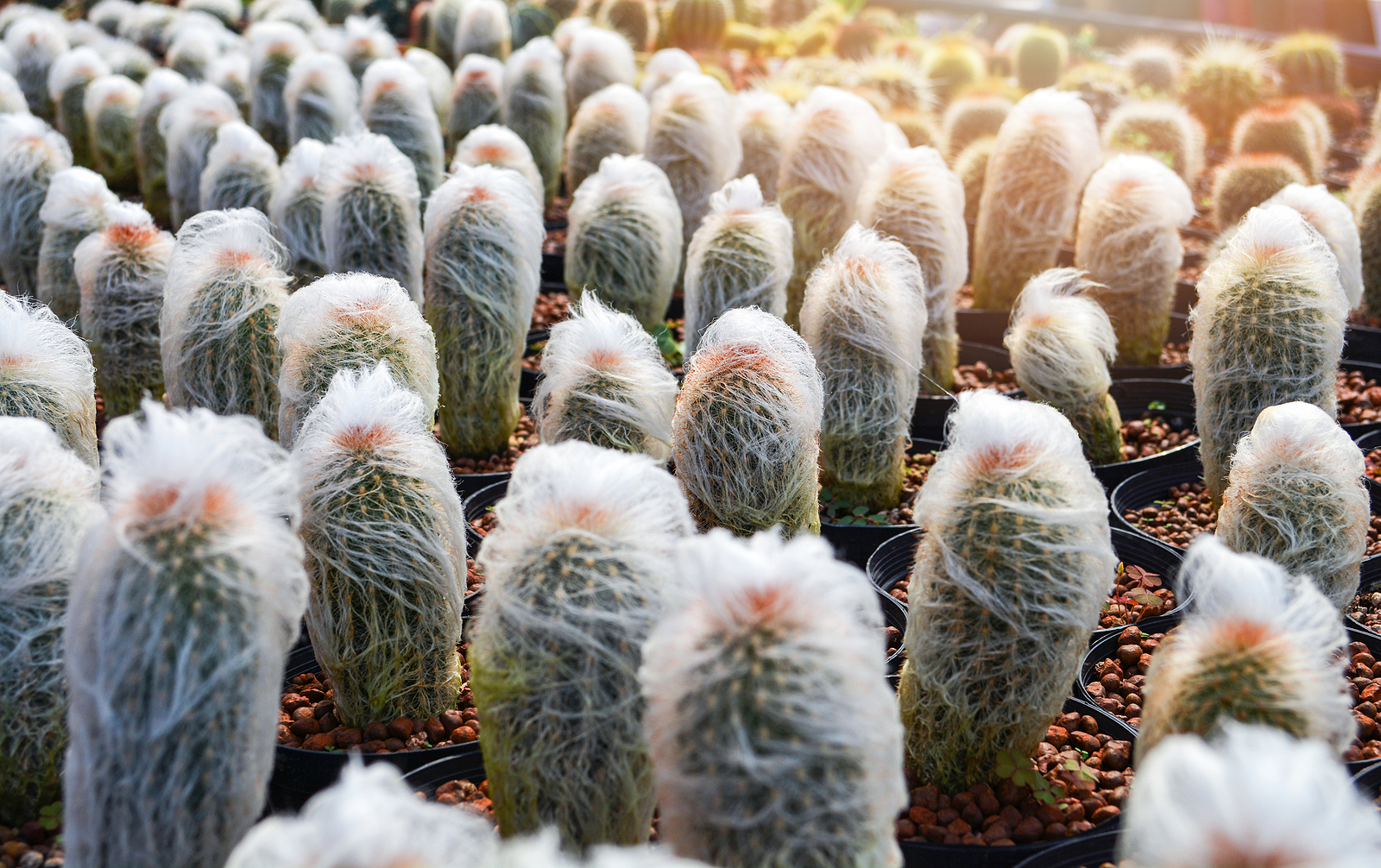 Old Man Cactus (Cephalocereus senilis). Succulent evergreen perennial. Grows to 12 inches tall covered with 5 inches long soft white “hairs,” hence its name. Beneath the hairs are sharp spines. Needs more winter warmth than other cactus; keep temperatures greater than 60°F (17°C). Grow outdoors in Zones 8-11.
Old Man Cactus (Cephalocereus senilis). Succulent evergreen perennial. Grows to 12 inches tall covered with 5 inches long soft white “hairs,” hence its name. Beneath the hairs are sharp spines. Needs more winter warmth than other cactus; keep temperatures greater than 60°F (17°C). Grow outdoors in Zones 8-11.
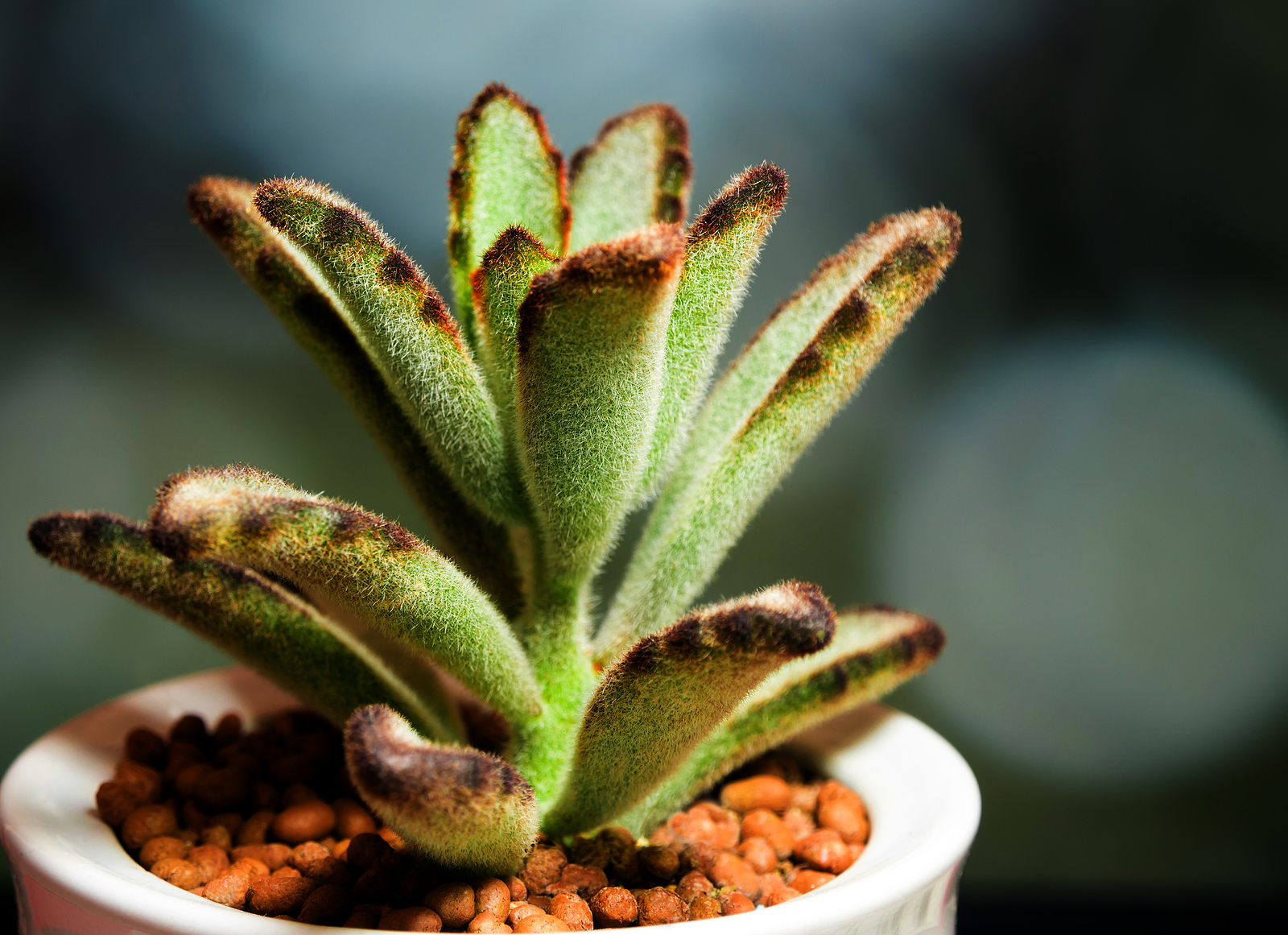 Panda Plant (Kalanchoe tomentosa). Succulent evergreen perennial. Attractive thick leaves covered with soft silver hairs; edges are tipped with chocolate-brown rust hair. Needs repotting infrequently. Grow outdoors in Zones 10-11.
Panda Plant (Kalanchoe tomentosa). Succulent evergreen perennial. Attractive thick leaves covered with soft silver hairs; edges are tipped with chocolate-brown rust hair. Needs repotting infrequently. Grow outdoors in Zones 10-11.
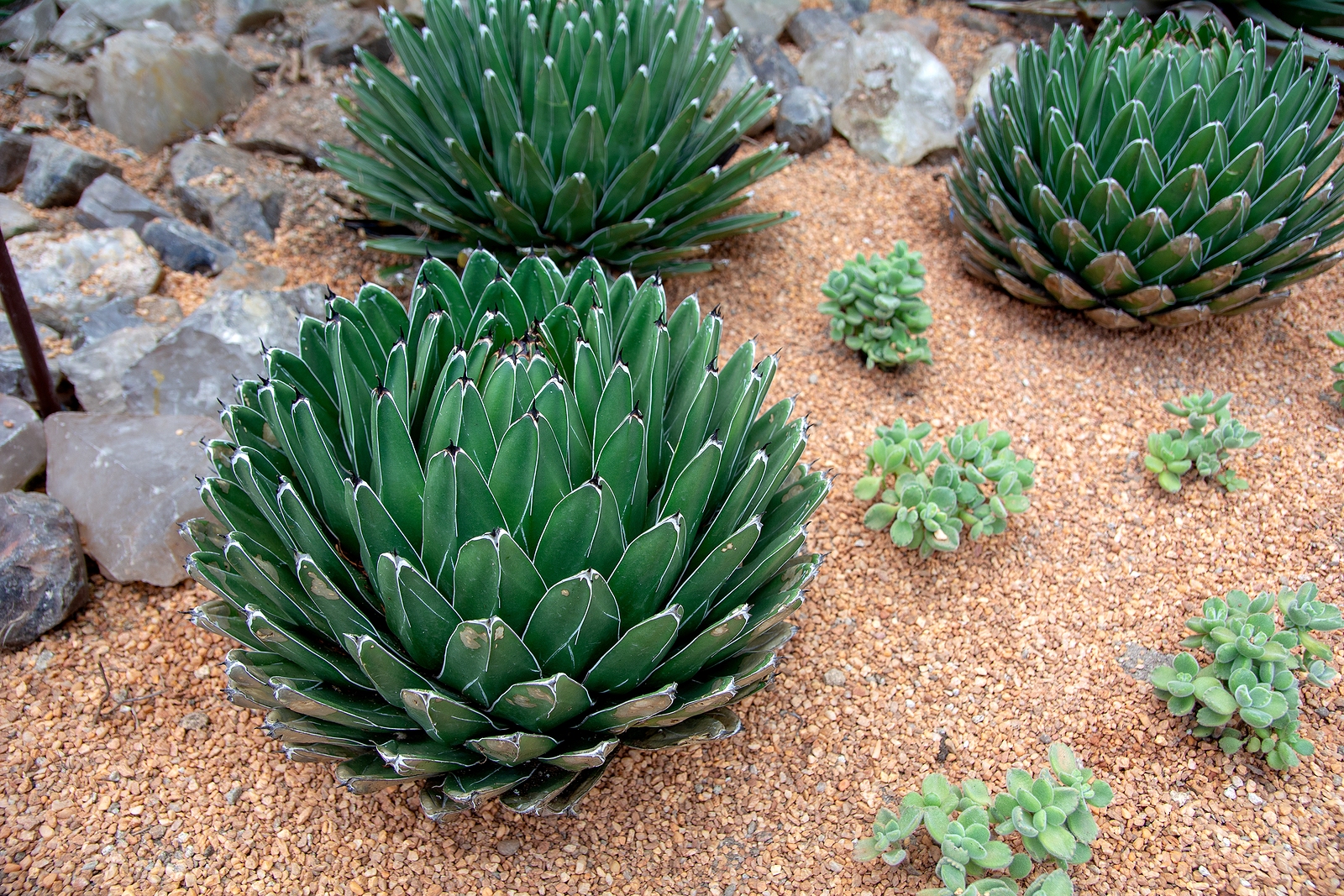 Queen Victoria Century Plant (Agave victoriae-reginae). Succulent evergreen perennial. One of the smallest agaves growing 6 to 12 inches across forms a rosette of triangular leaves in dark green edged in white. Prefers a shallow pot. Grow outdoors in Zones 8-11.
Queen Victoria Century Plant (Agave victoriae-reginae). Succulent evergreen perennial. One of the smallest agaves growing 6 to 12 inches across forms a rosette of triangular leaves in dark green edged in white. Prefers a shallow pot. Grow outdoors in Zones 8-11.
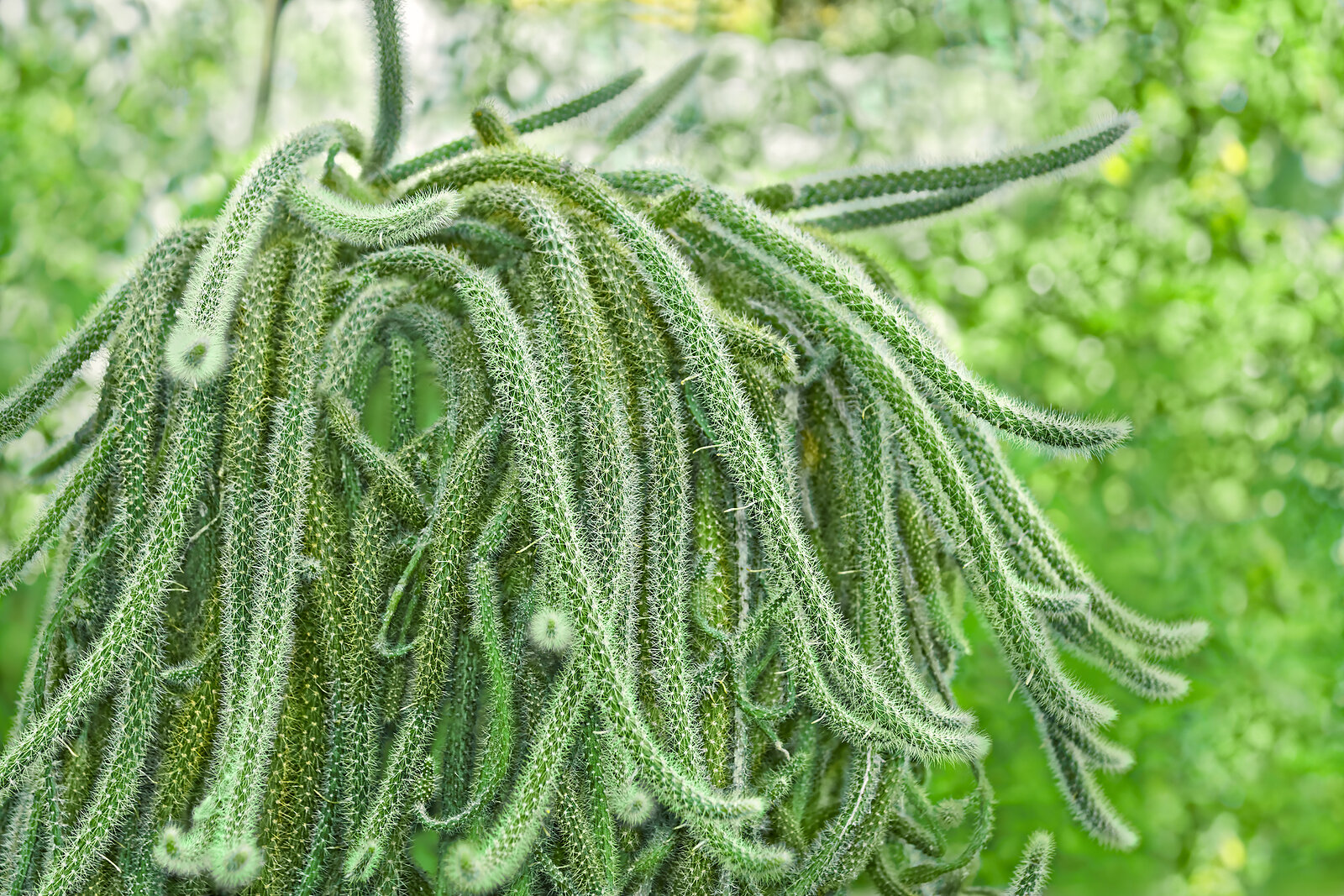 Rattail Cactus (Aporocactus flagelliformis). Succulent evergreen perennial. Interesting, long trailing rounded stems can grow to 24 inches long and are covered with delicate spines. Spectacular magenta flowers last up to two months along the stems. Grows outdoors in Zones 10-11.
Rattail Cactus (Aporocactus flagelliformis). Succulent evergreen perennial. Interesting, long trailing rounded stems can grow to 24 inches long and are covered with delicate spines. Spectacular magenta flowers last up to two months along the stems. Grows outdoors in Zones 10-11.
 Snowball Cactus (Mammillaria bocasana). Succulent evergreen perennial. Also called pincushion cactus, this is probably the most commonly grown cactus for the house, also the easiest to get to flower. Found in a variety of colors and textures. It stays small but may form a single ball or many balls in clumps. Grow outdoors in Zones 8-11.
Snowball Cactus (Mammillaria bocasana). Succulent evergreen perennial. Also called pincushion cactus, this is probably the most commonly grown cactus for the house, also the easiest to get to flower. Found in a variety of colors and textures. It stays small but may form a single ball or many balls in clumps. Grow outdoors in Zones 8-11.
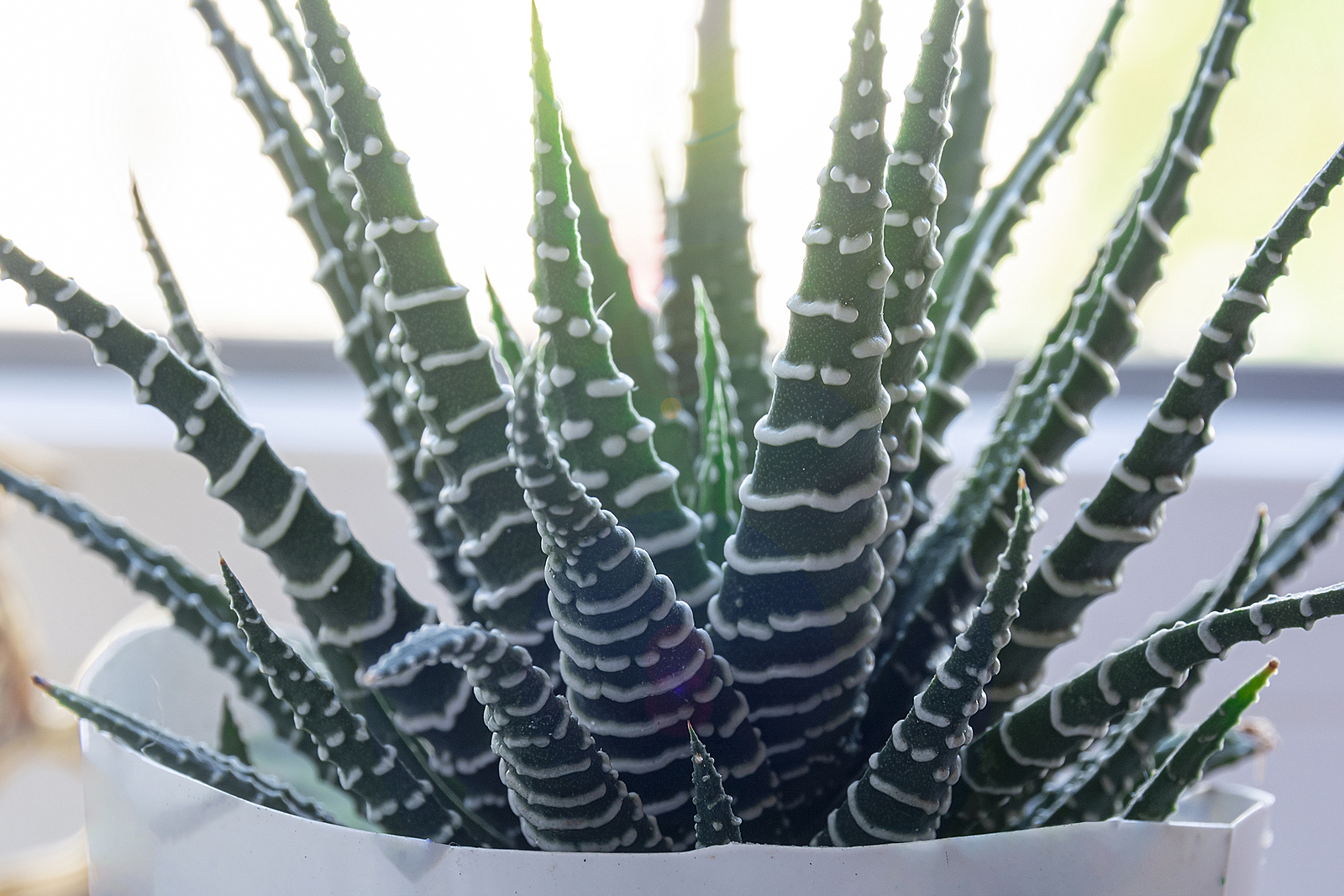 Zebra Plant (Haworthia fasciata). Succulent evergreen perennial. Forms rosettes of sharply pointed, fleshy brownish to green leaves with a network of white horizontal veins. Unlike other cactus and succulents, its active growth is in winter. Needs bright to medium light. Grow outdoors in Zones 10-11.
Zebra Plant (Haworthia fasciata). Succulent evergreen perennial. Forms rosettes of sharply pointed, fleshy brownish to green leaves with a network of white horizontal veins. Unlike other cactus and succulents, its active growth is in winter. Needs bright to medium light. Grow outdoors in Zones 10-11.
More Cactus and Succulents to Grow Indoors
Here are some additional cacti and succulents for window gardens or growing indoors. Listed first in the genus, the species:
- Aeoniums: A. arboretum ‘Atropupureum’, A. caanariense
- Agaves: A. filifera, A. picta, A. stricta. A. victoriae-reginae
- Aloes: A. nobilis, A. striata, A. variegata
- Astrophytums: A. capricorne, A. ornatum
- Cephalocereus: C. palmeri, C. senilis
- Crassulas: C. arborescens, C. agrentea, C. lycopodioidea
- Echeverias: E. derenbergii, E. elegans, E. pulvinata
- Echioncactus: E. grusonii
- Echinocereus: E. ehrenbergii, E. pectinatus, E. reichenbachii
- Euphorbia: E. lactea, E. milii, E. obesa
- Kalanchoes: K. blossfeldiana, K. tomentosa
- Mammillarias: M. bocasana, M. fragilis, M. spinosissima
- Notocacuts: N. haselbergii, N. ottonis. N. schumannianus, N. scopa
- Optunias: O. basilaris, O. microdasys
- Parodias: P. aureispina, P. sanguiniflora
- Rebutias: R. kupperana, R. minuscula
- Sedums: S. multiceps, S. spectabile
Also of interest:















